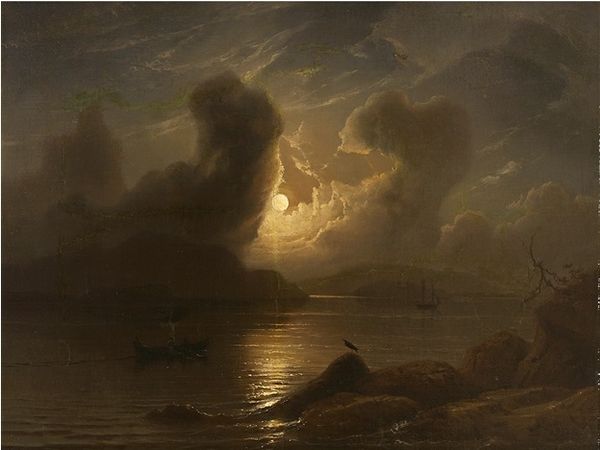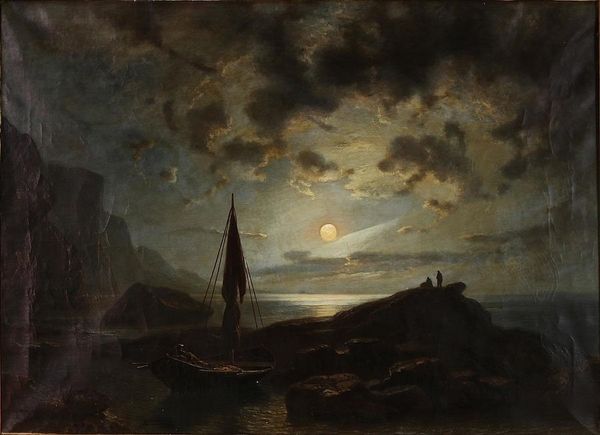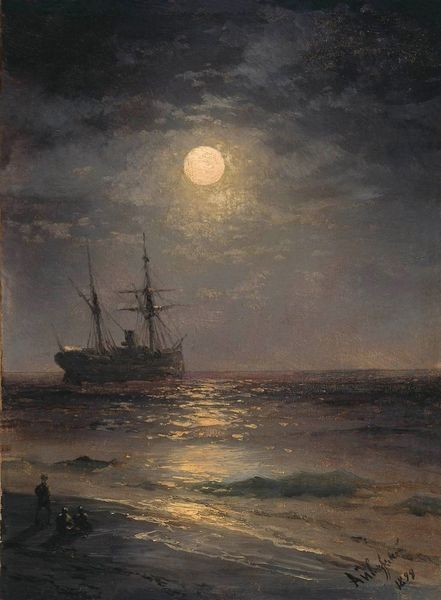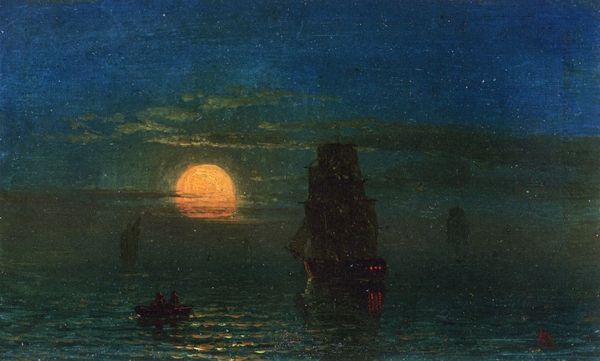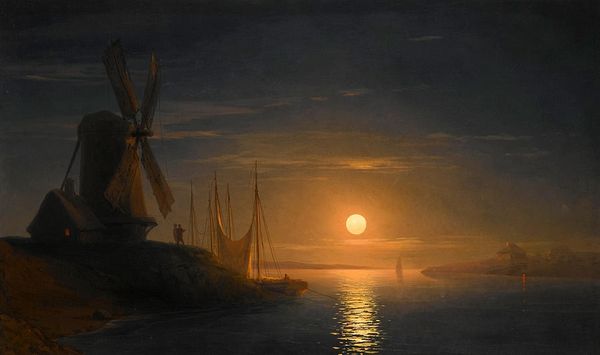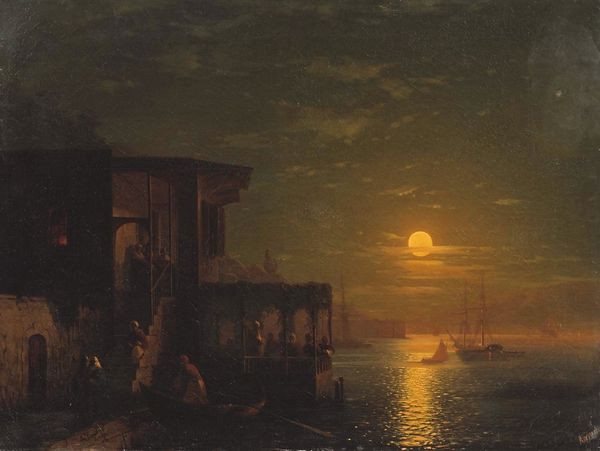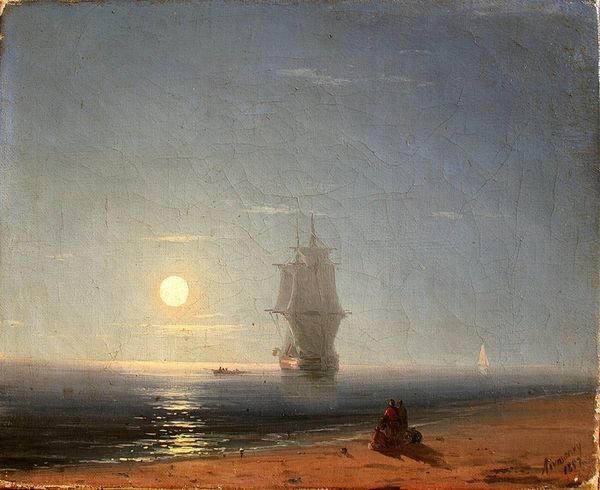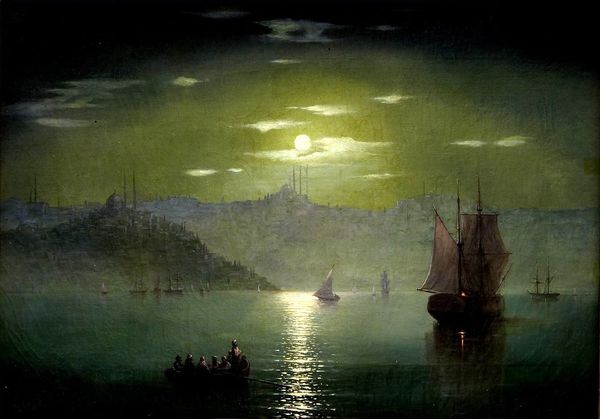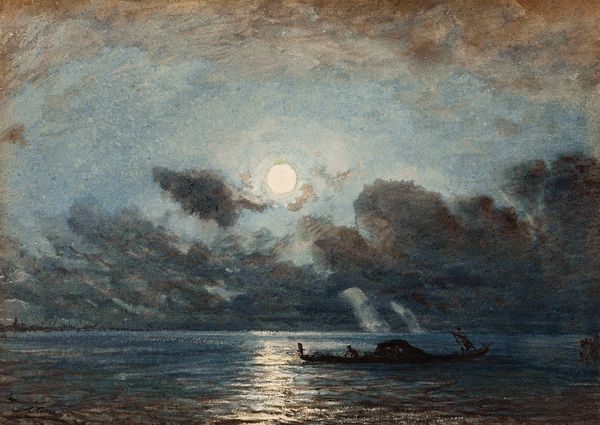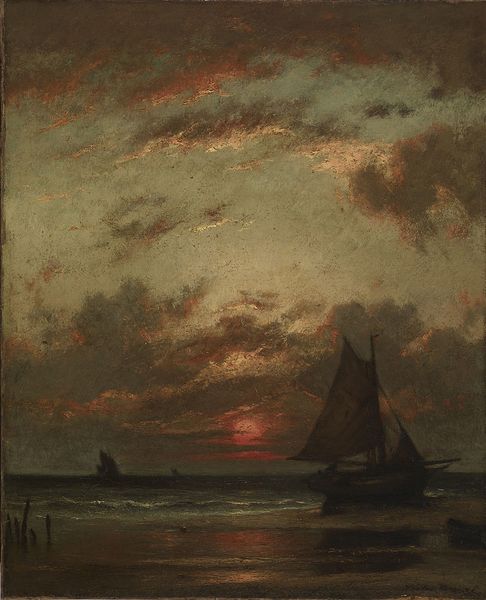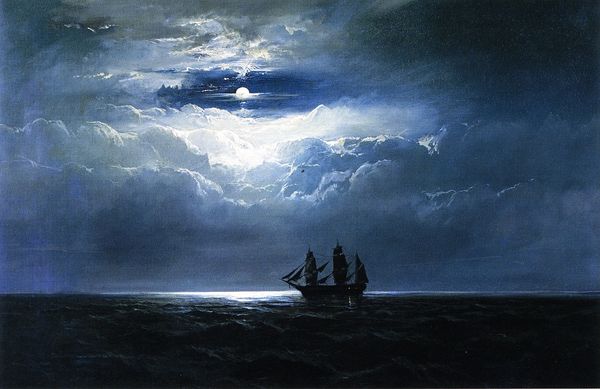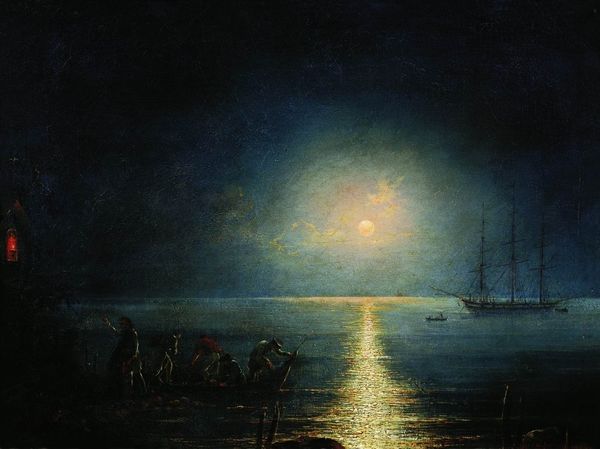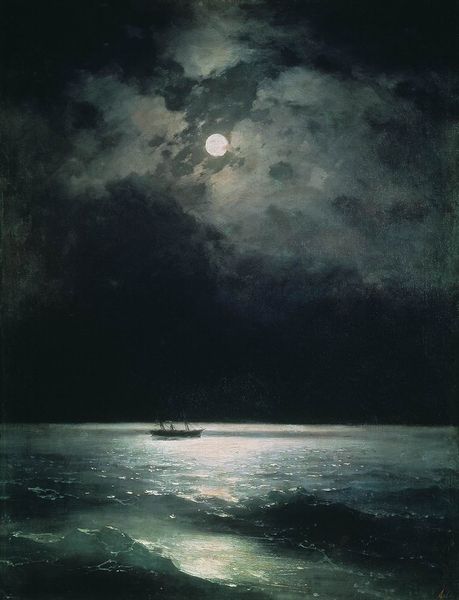
Copyright: Public domain
Editor: Here we have Ivan Aivazovsky's "Moonlit Night. Wrecked Ship," painted in 1871, using oil on canvas. I find the composition quite striking, contrasting the serenity of the moonlit sea with the wreckage in the foreground. What aspects stand out to you when you examine this work? Curator: Well, first and foremost, I'm drawn to Aivazovsky's manipulation of materials. Consider the layered application of oil paint. He builds up texture to simulate the churning sea, juxtaposed with the smooth, almost ethereal quality of the moon and sky. The 'wrecked ship', is that really a wreck? How has the object itself suffered material change through use? Or time? Or did someone profit through deliberate dismantling of labor and material? Editor: That's interesting, I hadn't considered the labor involved. Are you saying that the wreckage suggests more than just a natural disaster? Curator: Precisely! The production, transportation, and potential destruction of that ship speaks volumes about the socio-economic context. Was it a vessel for trade? Was it destroyed by imperial aggression, and how did consumption impact resources for ship building at this time? It demands we consider the larger system at play. Consider that ship breaking can be an end of the line process too, when ships become hazardous waste. Does Aivazovsky address this social stratification here or challenge the accepted boundaries in maritime production or waste? What do you think? Editor: I hadn’t thought about it that way. I was more focused on the Romantic feel. Now I am considering what processes could've led to the ship’s end. Curator: Exactly! By interrogating the ship's materiality, we unravel narratives far beyond the aesthetic. The artist creates more space to reflect upon both the grand narratives of maritime power, industry and nature’s unforgiving cycle that shapes labour, social relationships and waste production of 1871. Editor: Thank you, I see this painting so differently now. The story is not just in the scene, but in the ship itself and it's demise. Curator: Indeed. Reflecting on the painting materialistically reveals a richer, more profound understanding of its cultural impact beyond art for art’s sake.
Comments
No comments
Be the first to comment and join the conversation on the ultimate creative platform.
